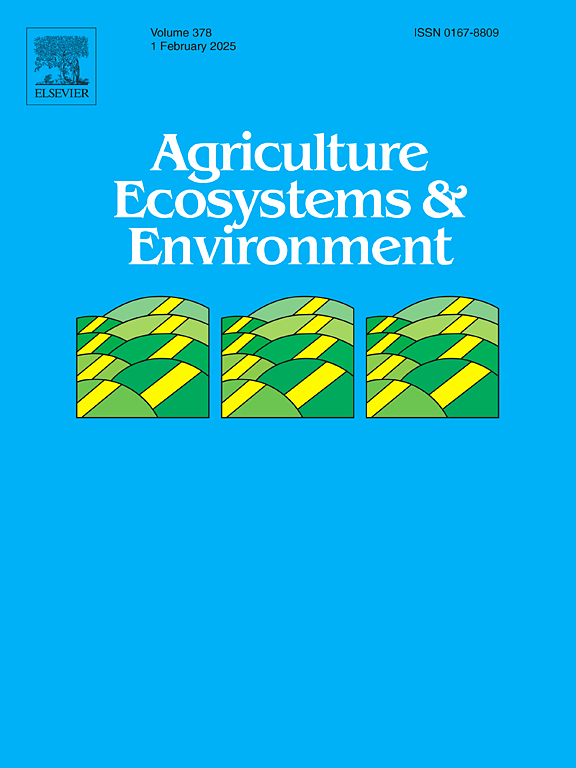Physical and chemical soil quality and litter stock in agroforestry systems in the Eastern Amazonia
IF 6
1区 农林科学
Q1 AGRICULTURE, MULTIDISCIPLINARY
引用次数: 0
Abstract
Agroforestry systems are productive land-use strategies that combine agriculture and forestry. However, the influence of the age of these systems on soil restoration is still poorly understood and serves to inform appropriate management practices. In this context, this study aimed to investigate the potential of agroforestry systems of different ages and arrangements to restore the physical and chemical attributes of the soil and increase litter production in the Eastern Amazon. For this purpose, litter stock, chemical properties (pH, organic matter, Al3+, Ca2+, Mg2+, K+, P, potential acidity, aluminum saturation, base saturation, effective cation exchange capacity, and cation exchange capacity at pH 7), and physical properties (particle density, bulk density, gravimetric moisture, volumetric moisture, and volumetric water content) of the soil were evaluated in four agroforestry systems of different ages (7-month-old, 5-year-old, 26-year-old, and 51-year-old) and in a secondary forest (70-year-old) as a reference, all located in the state of Pará, Brazilian Amazon. Only the litter stock of the 7-month-old agroforestry system (5.73 ± 1.04 Mg ha−1) was lower than that of the secondary forest (11.42 ± 2.44 Mg ha−1). The average values of Mg2+, Ca2+, K+, P, organic matter, effective exchange capacity, and base sum found in the oldest agroforestry system were like those in the secondary forest at the surface soil depth, while for the physical attributes, all properties showed similar average values between these two ecosystems. The three younger agroforestry systems stored more water and had higher average pH values, indicating that soil acidity correction and preparation before implementation contribute to the improvement of these characteristics. Moreover, the maturity of the agroforestry systems increased functionality, such as nutrient cycling and water retention. Some important attributes, such as base saturation and organic matter, tend to stabilize over time, decreasing and increasing, respectively. Thus, even after decades of shifting cultivation, the adoption of agroforestry systems gradually restores the chemical and physical integrity of the soil.
求助全文
约1分钟内获得全文
求助全文
来源期刊

Agriculture, Ecosystems & Environment
环境科学-环境科学
CiteScore
11.70
自引率
9.10%
发文量
392
审稿时长
26 days
期刊介绍:
Agriculture, Ecosystems and Environment publishes scientific articles dealing with the interface between agroecosystems and the natural environment, specifically how agriculture influences the environment and how changes in that environment impact agroecosystems. Preference is given to papers from experimental and observational research at the field, system or landscape level, from studies that enhance our understanding of processes using data-based biophysical modelling, and papers that bridge scientific disciplines and integrate knowledge. All papers should be placed in an international or wide comparative context.
 求助内容:
求助内容: 应助结果提醒方式:
应助结果提醒方式:


